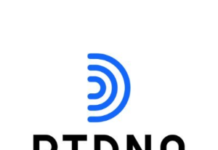
(By Deborah Parenti) Whether from history lessons or memes, you are likely familiar with the famous “Keep Calm and Carry On” poster. The Ministry of Information of the United Kingdom designed the poster during World War II to maintain morale and national pride when faced with Axis air raids and the threat of invasion. However, not many people know about Keep Calm’s sister poster, one that rings true for local news today:
“Freedom Is In Peril. Defend It With All Your Might.”
With global conflicts, economic turmoil, and an already contentious presidential election in store for 2024, broadcasters across the U.S. are struggling to provide the credible, responsible, local journalism communities need now more than ever as revenue slows under attacks from Big Tech. According to the US Bureau of Labor Statistics, newsroom employment is down 50% in the 14 years ending at the beginning of the COVID-19 pandemic.
As ad dollars decrease, the survival of broadcast newsrooms hangs in the balance, and with them hangs the survival of service to communities otherwise void of reliable news and information in our increasingly divided and dangerous world. We’re talking about responsible journalism that delivers the facts, not bias, at street level.
When you want to know what’s going on with the school board, how zoning initiatives might impact the value of local real estate, and what time the nearby high school is playing its crosstown rival, you turn to local news. This is true journalism that is alive so long as on-air lights are lit and local reporters are on the scene. But that takes money – big money that is being lost to Big Tech – estimated near $2 billion every year.
Unfortunately, advertisers are wavering in their support of local news platforms for all the wrong reasons. They are seemingly unaware of the vital role they play in ensuring that local newsrooms play in keeping the local community in the know and local politicians accountable to the electorate.
As Lou Paskalis, CEO and Founder of AJL Advisory and Chief Strategy Officer of Ad Fontes Media, pitches it to broadcasting’s potential clients, “Advertising alone cannot fix this problem, but we can be part of the solution.”
Forecast 2024 attendees had the opportunity to hear from Lou, who has risen to be one of local journalism’s biggest cheerleaders. He is on a mission to make it obvious to advertisers that local news is responsible, of crucial importance to local communities, and deserving of ad dollars. Lou’s perspective is beyond refreshing, especially coming from someone “outside” the broadcast industry. His passion is even more empowered by his vast bank of facts.
Paskalis says,” Local journalism is the lifeblood of every community which it serves. It’s the fabric that keeps that community connected and informed. Those communities rely on local journalism platforms to know what’s going on with the school board, how zoning initiatives might impact the value of local real estate, and what time the nearby high school is playing its crosstown rival. As we just saw on the Saturday after Thanksgiving, local news platforms are a vital part of Main Street’s initiatives to bring shoppers into their stores with Small Business Saturday deals. Unfortunately, advertisers are wavering in their support of local news platforms for all the wrong reasons and without regard to the vital role they play in ensuring that local newsrooms play in keeping the local community in the know and local politicians accountable to the electorate.”

“This trend has already left thousands of local communities without a single local news source or such reduced news coverage that they’re ineffective in their primary mission. In March, The Los Angeles Times reported that the 152-year-old Salinas Californian, a paper serving the county seat and its 162,000 residents in the Salinas, CA market, employed only one person in their newsroom and her role was to take obituaries that came in over the phone. It turns out that the only sign of life in that newsroom is someone there to chronicle deaths, perhaps a fitting, if somber analogy for the plight of local news in America if we don’t reverse this trend.”
“Advertisers need to step up – right now – and support local news if they hope to continue to reap the benefits of communities that are well informed, know the truth and aren’t left at the mercy of people purporting to purvey the news, who have agendas ranging from gerrymandering to manipulating public opinion to satisfy their own interests including sowing disharmony and division at the behest of foreign overlords. Journalists are the knights of truth, and we need local newsrooms that are full of them and it’s up to advertisers to recognize their responsibility to make that a reality.”
Paskalis also shares some wisdom about who needs to hear the message that broadcasters would be smart to follow. Having spent three decades in client-side leadership roles, leading global communications planning, media investment, marketing data strategy, and brand safety at Bank of America; media, content, and mobile marketing at American Express; and related roles at E. & J. Gallo before that, Lou knows who to reach.
As he explains, it is risk-averse corporate communications executives — not the marketing team — who are the real catalysts for keeping brands away from sponsoring or advertising in broadcast news programming. In the meantime, Big Tech profits. These Tech Giants, whose influence over online content monetization is beyond huge, are stopping local stations from recouping their investment in local journalism. A 2021 BIA Advisory Services report on Google Search and Facebook News Feed reported local broadcasters lose an estimated $1.873 billion every year by providing their content to these platforms.
The NAB has published an excellent summation of the issues regarding Big Tech’s danger to local journalism that is available on its website. If you have not yet read it, I strongly encourage you to do so.
Leaders on Capitol Hill and in state legislatures see the threat this poses to democracy at the grassroots level and have introduced bills like the Journalism Competition and Preservation Act, which would see local newsrooms paid for their content used on sites like Facebook or Google – who are profiting off locally made content while gatekeeping news via algorithms.
But Big Tech won’t give up their dollars – and power – without drastic measures. When similar legislation was signed into law in Canada in June of last year, Meta and Google made good on threats to yank all news content from their Canadian platforms, depriving these modern thoroughfares of information of watchdogs, transparency, and informed decision-making. A Meta spokesperson said, “We have been transparent and have made it clear to the Canadian government that the legislation misrepresents the value news outlets receive when choosing to use our platforms.”
“News outlets voluntarily share content on Facebook and Instagram to expand their audiences and help their bottom line. In contrast, we know the people using our platforms don’t come to us for news,” they continue.
Let’s not mince words: we can count on the same result here in the U.S. This is why advertisers need to hear the truth about local broadcasting until it’s ringing in their ears, and they step up to defend those who defend the truth.
More than ever, listeners need reliable, credible information, the kind local broadcasters can best provide. To achieve this, broadcasters need ad support. If local journalism is to survive, the message has to be heard by the right influencers. Now is the time to start rattling some cages. “Freedom is in peril! Defend it with all your might!”
Deborah Parenti is Publisher of Radio Ink. Reach Deborah at [email protected]. Read her Radio Ink digital archives here or read her latest column with a digital or print subscription here.










Hi, Ms. Parenti. Thank you for the inspired ideas that we can not only can take to heart but implement! As we all know (I hope), it’s not tech but the people running the tech that can be the problem. As one who was there at creation & helped bring the first major innovation to radio in 1991; known as Digital Generation Systems, aka, DG Systems, and DGFastchannel, tech can be very helpful to the Ad and broadcast radio industry.
I invite you to take a look at what that same core team has been working on for years and what we’re growing now. Some of us real, radio folks are out there doing their best to keep radio relevant and making our listeners & advertisers happy.